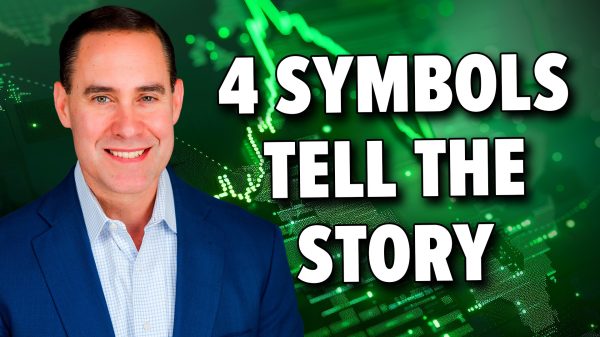Crypto Crowdfunding: ICOs and STOs Explained
Over the past decade, cryptocurrencies have surged in popularity, transforming from niche digital assets to mainstream financial instruments. Cryptocurrencies, which are virtual currencies recorded on a blockchain, have significantly impacted various industries, particularly finance. Blockchain technology, a distributed ledger, has garnered massive value in the financial sector due to its transparency, security, and decentralisation. Consequently, many companies are now incorporating blockchain technology and cryptocurrencies into their business verticals, reshaping how businesses operate and fund their ventures.
The Evolution Of Fundraising: From Traditional To Crypto Crowdfunding
Starting any business traditionally required substantial funds, often obtained through conventional means like bank loans, venture capital, or initial public offerings (IPOs). However, the emergence of cryptocurrencies has revolutionised fundraising, especially for startups and crypto entrepreneurs. Today, many opt for crypto crowdfunding to gather the necessary capital.
Crypto crowdfunding encompasses various methods such as ICOs, STOs, IEOs, IFOs, and IDOs. Among these, ICOs and STOs are particularly popular. This article will delve into the nuances of ICOs and STOs, focusing on their differences and respective advantages.
Understanding Initial Coin Offerings (ICOs)
An Initial Coin Offering (ICO) is the cryptocurrency industry’s equivalent of an IPO in the traditional financial world. Since its rise to prominence in 2017, ICOs have become a preferred method for startups to raise funds. The process begins with a startup launching a whitepaper, detailing the project’s goals, the number of tokens available, the timeline, and other critical information. Interested investors can fund the project, receiving crypto tokens as rewards in exchange for their contributions.
The tokens offered in an ICO are typically utility tokens. These tokens grant holders access to the startup’s products or services. ICOs have proven to be lucrative for both startups and investors, offering substantial returns. Notably, ICOs operate without regulations or central authority involvement, making them entirely decentralised. Experts often regard ICOs as an ideal method for crypto crowdfunding due to their independent nature and several other benefits.
Benefits of an ICO
Independent Fundraising Platform: ICOs enable startups to raise funds independently, without relying on traditional financial institutions or intermediaries. Cost-Effective: The cost of launching an ICO is relatively low compared to other fundraising methods, making it accessible to more startups. Ease of Creation: Developing an ICO website is straightforward, allowing startups to quickly set up and manage their fundraising campaigns. No Launch Restrictions: ICOs can be launched without stringent restrictions, providing greater flexibility for startups. High Liquidity: ICOs can achieve high liquidity in a short time, offering immediate capital to startups. Unlimited Fundraising Potential: There are no predefined limits on the amount of funds that can be raised through an ICO. Decentralisation: ICOs operate without government or third-party involvement, ensuring a decentralised fundraising process. Investor Attraction: The potential for high returns and the innovative nature of crypto projects make ICOs highly attractive to investors.Understanding Security Token Offerings (STOs)
In the ever-evolving landscape of cryptocurrency and blockchain technology, Security Token Offerings (STOs) have emerged as a regulated and secure alternative to Initial Coin Offerings (ICOs). Both methods aim to raise funds for startups, yet STOs bring an added layer of security and regulatory compliance. This article delves into the intricacies of STOs, their benefits, and the steps to successfully launch both ICOs and STOs.
What is a Security Token Offering (STO)?
A Security Token Offering (STO) is akin to an ICO in that it is a means of fundraising for startups. However, the critical distinction lies in the regulation and backing of security tokens. STOs are regulated by government bodies and involve the issuance of security tokens, which are backed by real-world assets such as bonds, real estate, and other valuables. These tokens are validated by the Securities and Exchange Commission (SEC) and must adhere to local government regulations.
Security tokens provide full ownership over a completely secured blockchain ledger, ensuring a high level of trust and security for investors. The involvement of government authorities in the validation process enhances investor confidence, making STOs a preferred choice for those seeking a secure investment avenue. While the underlying processes of fundraising remain similar to those in ICOs, the regulatory compliance and asset backing set STOs apart.
Benefits of an STO
Fractional Ownership: The value of assets can be divided into smaller units, allowing for fractional ownership, which lowers the barrier to entry for investors. Enhanced Liquidity: STOs offer greater liquidity compared to traditional assets, making it easier for investors to buy and sell their security tokens. Regulation and Safety: Being regulated by the SEC and other authorities, STOs are considered risk-free, ensuring a secure investment environment. Market Efficiency: Higher market efficiency is achieved due to the regulated nature of STOs, leading to transparent and fair trading practices. Investor Trust: The regulatory compliance and security measures build significant trust among investors. Elimination of Middlemen: STOs cut out intermediaries and brokers, reducing costs and increasing transaction efficiency.Steps for Launching a Successful ICO and STO
Launching a successful ICO or STO involves a series of meticulous steps. While both processes share similarities, there are distinct steps that need to be followed for each.
Steps for Launching an ICO
Develop a Phenomenal Idea: Start with a groundbreaking concept that solves a real problem or fills a market gap. Competitor Analysis: Conduct thorough research to understand the competitive landscape. Identify Crypto-Friendly Jurisdictions: Choose countries with favourable crypto regulations. Create a Crypto Token: Develop your unique token based on your project’s requirements. Draft a Whitepaper: Document your project’s goals, technology, and business plan in a comprehensive whitepaper. Design an ICO Website: Build an informative and user-friendly website to present your ICO. Promotion and Marketing: Implement effective marketing strategies to attract potential investors. ICO Launch: Officially launch your ICO to the public.Steps for Launching an STO
Develop an Extraordinary Business Idea: Begin with a solid business concept backed by real-world assets. Adhere to Regulations: Follow all necessary regulatory requirements meticulously. Create a Whitepaper: Outline your project’s objectives, the technology involved, and the asset backing in a detailed whitepaper. Legal Advisory: Consult with legal experts to ensure compliance with all relevant jurisdictions. Choose an STO Development Service Provider: Select a reputable provider to assist in developing your STO platform. Create a Security Token: Develop tokens that represent shares of the underlying assets. Develop an STO Website: Create a professional website to facilitate your STO. Marketing and Promotion: Execute targeted marketing campaigns to reach potential investors. STO Launch: Launch your STO to the public.By adhering to these steps, startups can successfully navigate the complex landscape of ICOs and STOs, ensuring regulatory compliance, investor trust, and a solid foundation for growth. Selecting a renowned STO development service provider is crucial, as they offer guidance and expertise in creating robust and compliant fundraising platforms.
Ico Vs. Sto: Weighing The Disadvantages And Advantages
As the financial world continues to embrace blockchain technology, the debate between Initial Coin Offerings (ICOs) and Security Token Offerings (STOs) grows more prominent. Both fundraising methods offer unique benefits and challenges. Understanding their disadvantages and advantages is crucial for investors and startups alike.
Disadvantages of ICOs
High Volatility and Market Manipulation
One of the most glaring disadvantages of ICOs is the extreme volatility and susceptibility to market manipulation. The crypto market is notoriously unpredictable, with prices swinging wildly, making it a risky environment for investors.
Low Liquidity
Despite the initial hype, many ICO tokens suffer from low liquidity. This means that once purchased, tokens can be difficult to sell, trapping investors in a holding pattern and limiting their ability to cash out.
Uncertainty and Delivery Concerns
There is no guarantee that the product or service promised in an ICO’s white paper will be completed or delivered as stated. Many projects fail to meet their goals, leaving investors with worthless tokens.
Prevalence of Scams
ICOs have been plagued by scams and pump-and-dump schemes, where project founders artificially inflate the price of a token before abandoning the project and leaving investors with significant losses.
Regulatory Challenges
Operating in an unregulated space, ICOs often face regulatory hurdles that can create problems for both projects and investors. Sudden regulatory changes can disrupt projects and impact investor confidence.
High-Risk Environment
The lack of regulation in the ICO space means high risks for investors. Without oversight, fraudulent activities and mismanagement are rampant, leading to potential financial losses.
Disadvantages of STOs
Regulatory Hurdles
STOs require significant time, effort, and financial resources to gain regulatory approval. This rigorous process can be a barrier for many startups.
Limited to Accredited Investors
Often, STOs are restricted to accredited investors, excluding a large segment of potential participants. This limitation can reduce the accessibility and democratization of investment opportunities.
Significant Financial Requirements
Launching an STO can require substantial financial investment, making it less feasible for smaller startups with limited capital.
Limited Approval from SEC
The SEC has yet to approve any Reg A+ STO, and current regulations mainly allow for institutional investor participation, further limiting the reach of STOs.
Advantages of ICOs
No Entry Barriers
ICOs typically have no entry barriers for both buyers and sellers, making them accessible to a wide range of participants. This democratization allows anyone to participate in the funding process.
Network Effects
ICOs benefit from positive network effects, where the value of the token can increase as more people buy in and use the platform.
Simple Distribution
Tokens in an ICO are distributed in a straightforward, automated manner, simplifying the process for both issuers and investors.
Fund Management Flexibility
Teams behind ICOs can manage their funds as they see fit, providing them with the flexibility to adapt and pivot as needed.
Digital Campaign Success
A well-executed digital marketing campaign can lead to a successful ICO, attracting significant investment with relatively low overhead costs.
High Profitability Potential
If a token’s value increases and the team delivers on their promises, investors can enjoy high returns and the benefits of being early adopters.
Anonymous Participation
Some ICOs allow for anonymous participation, attracting investors who prefer to keep their identities private.
Advantages of STOs
Asset-Backed Investments
Investors in STOs acquire underlying assets that derive their value from real-world entities, such as real estate or company shares, providing a tangible basis for their investment.
Regulated Offerings
STOs are fully regulated, ensuring investor security and compliance with legal standards. This regulatory oversight builds trust and reduces the risk of fraudulent activities.
Mature Projects
Projects opting for STOs are generally more mature and trustworthy than many in the ICO sphere, offering a more reliable investment opportunity.
Growing Market
While the ICO market has shrunk, the STO space is experiencing significant growth, reflecting an ongoing trend towards more regulated and secure investment options.
Regulated Trading
Security tokens are expected to be traded via broker-dealers supervised by regulatory bodies, ensuring a safer and more transparent trading environment.
Next Step in Finance
Security tokens represent a significant evolution in traditional finance, merging the benefits of blockchain technology with regulatory compliance.
Reduced Speculation
With less market manipulation and speculation, STOs provide a more stable and predictable investment landscape.
The ICO vs. STO Dilemma
When compared to an ICO, “An STO adds regulatory complexity. It can also add some legitimacy to the process because ICOs have gotten a bad rep,” states Colin. “Using a regulated process helps individuals and businesses involved understand that there is some sort of framework.”
ICOs start with an intention to raise capital. From there, a company decides who they want to target as investors. Once tokens are created, the company must promote the offering to their target market to gain interest.
The post Crypto Crowdfunding: ICOs and STOs Explained appeared first on FinanceBrokerage.
























